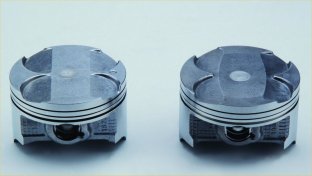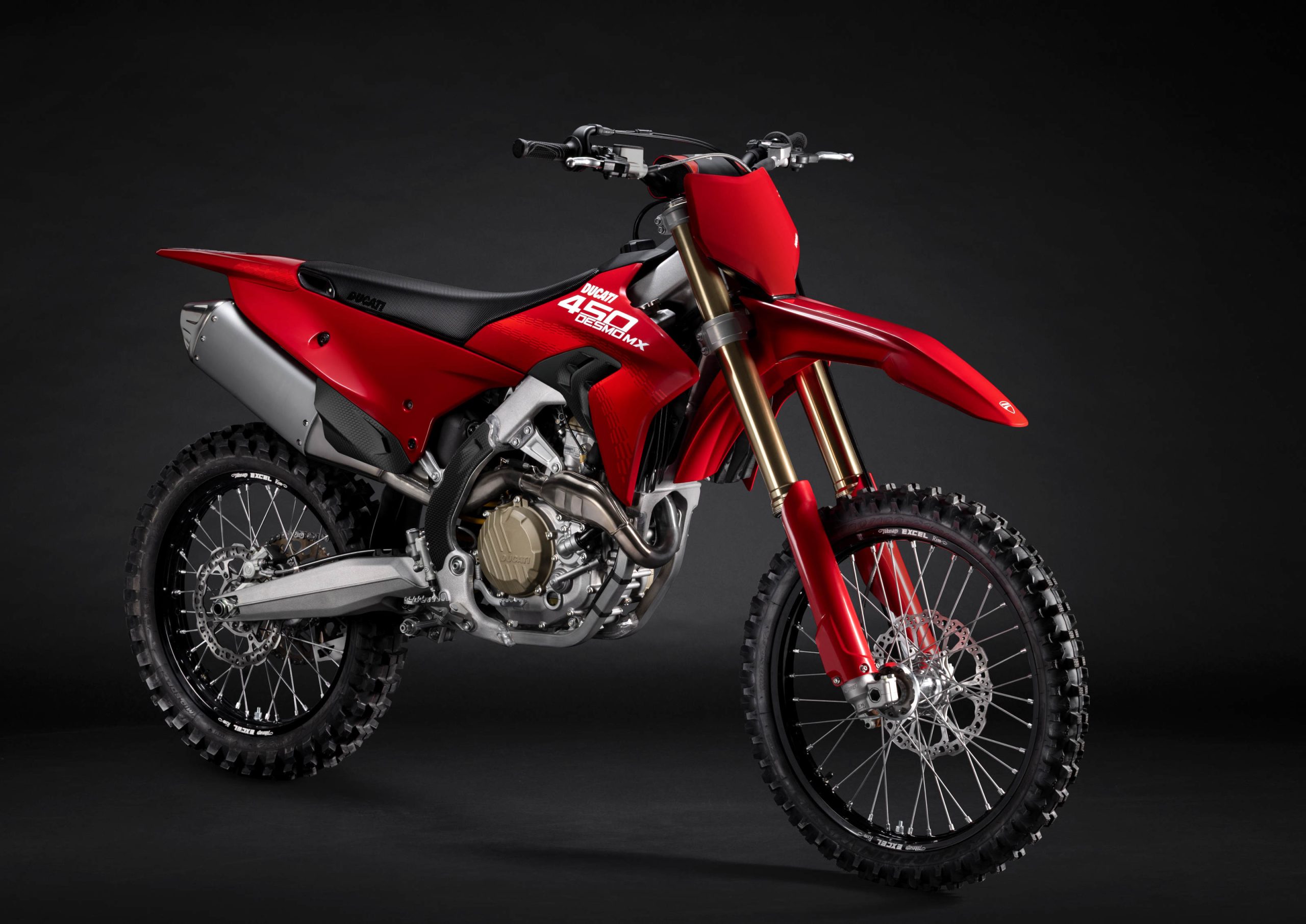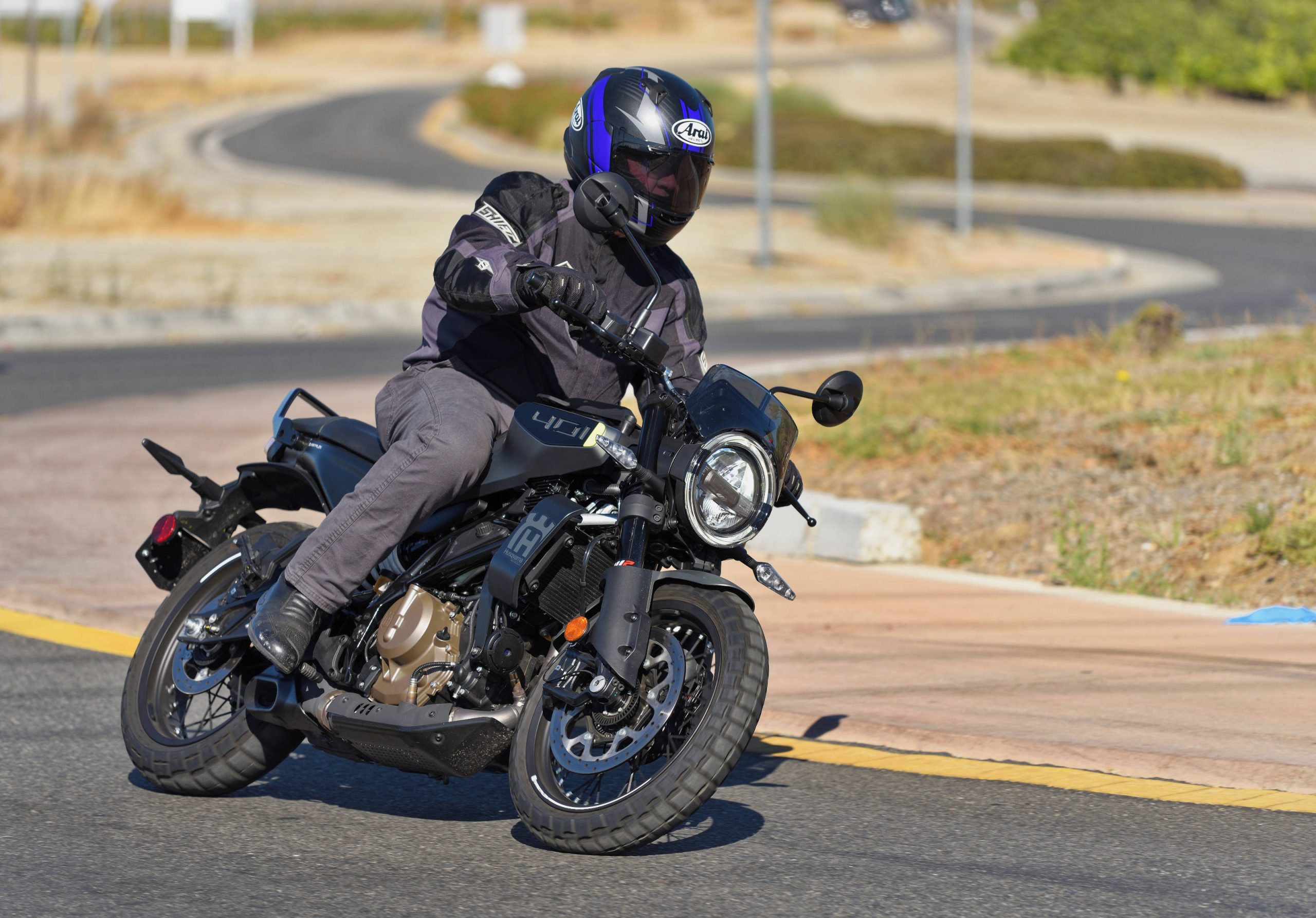
Okay, let’s get past the “standard” moniker, and move into the 21st century. “Naked” bikes are all the rage, and Kawasaki’s brand new Z1000 breaks new ground in a couple of areas (more about that later). We just spent several days testing a 2003 Z1000 (the black model — the bike also comes in orange, as illustrated in some of the photos). Let’s talk first about the technical aspects of this new bike, because that is a big part of the story.


In the United States, at least, the naked bike category has been the “weak sister” for most manufacturers. Old, already-paid-for components have been the rule. Indeed, interest in this category, and the desire to throw current technology at it, has only arisen on the manufacturer’s side in the last few years. Yamaha’s FZ1, with its R1 motor and brakes, might be considered the most high-tech bike in the category as of the 2002 model year. The Kawasaki Z1000 moves the bar forward from there.
While sharing the current engine with a manufacturer’s flag ship, open-class sportbike is impressive (as the FZ1 does), the Z1000 actually has a higher spec engine than Kawasaki’s open-classer, the ZX-9R. The Z1000 takes the ZX-9R engine and increases its displacement to 953 cc with a 2.2 mm larger bore. Additionally, the carbureted ZX-9R motor gets fuel injection in the Z1000 (featuring 38 mm throttle bodies, with sub-throttle valves for smoother operation).


Not all of the changes to the ZX-9R engine were intended to increase performance in the Z1000, however. Fins cast into the head were intended to impart a traditional appearance. Horizontal intake ports are also utilized for appearance reasons. Cam timing and profile are changed to increase low and mid-range power (presumably, at the expense of some peak horsepower). The engine exhales through four stainless-steel mufflers that are heat-treated (creating the golden color).

The Z1000 engine is mounted in a rigid diamond frame as a stressed member. A detachable right front-top engine mount eases maintenance.
Suspension consists of an inverted 41 mm fork adjustable for both preload and rebound, with a rear shock also adjustable for preload and rebound. The 17 inch rims on the Z1000 come straight off the ZX-9R, and our test unit featured excellent Bridgestone BT-020 tires (including a huge, 190 section rear).
The front brake features 300 mm discs gripped by the same four-piston calipers found on the ZX-9R. The rear brake is a smaller, single-disc set-up.

The Z1000 gets the same instrument technology featured on the new Kawasaki sportbikes, which results in an extremely light, compact instrument cluster with a bar-type LCD tachometer and digital LCD speedometer. Other information provided by the instruments include temperature, clock, trip meter, fuel gauge and a gaggle of indicator lamps.
The styling of the Z1000 is, simply put, stunning. The bike is impressive in pictures, but it is even more so in the flesh. The bold design of the Z1000 isn’t an aberration — expect much more to come from Kawasaki.
Over a year ago, Kawasaki hired Shunji Tanaka, formerly with Mazda (where he had a hand in designing the Miata – the world’s best-selling sports car). Quoted in Rider Magazine, Tanaka promises “There is more drastic change to come!” Apparently, Kawasaki is serious about getting back to its high-performance roots, both in actual engine and chassis performance, and in design that reflects that heritage.
As always, styling is a matter of taste, but even if you don’t like the styling of the new Z1000, no one can deny that it attracts attention. Riding the bike around, and parking it at gas stations, drew looks from every age group.

Complementing the shape of the body panels are the distinctive exhaust pipes and gold anodized upside-down forks. The LED tail light, and the angle of the tail add to the package.
The small bikini fairing actually does a fairly good job of keeping wind blast off the rider’s chest at higher speeds, and doesn’t clutter up the design — leaving the bike a true “naked”.
Naked bikes typically feature torquier powerbands (low and mid-range biased) than their sportbike counterparts, and the Z1000 is no different. Kawasaki obviously wanted to maintain pretty serious peak horsepower, however, and the Z1000 revs out better than many nakeds. Indeed, the Z1000’s power delivery represents a pretty good compromise between the low-end bias of Honda’s 919 and the top-end scream you get with Yamaha’s FZ1.

The Z1000 is a little soft right off idle, but pulls smoothly into a meaty mid-range and a very serious top-end rush. Overall, the Z1000 is extremely fast — probably a close contender with Yamaha’s FZ1 in a drag race.
The fuel injection delivers that power smoothly and progressively — utilizing Kawasaki’s latest fuel injection design (also featured on the new ZX-6R, for instance).
The Z1000 puts more vibes through the bars and the pegs than some of its competitors — reflecting the fact that the engine is directly bolted to the frame as a stressed member. We didn’t find the vibration annoying, however, but it is there. We did have an annoying buzz from the clutch lever at around 5,000 rpm (something that could probably be fixed with a three cent washer). In the mid-range, the mirrors were also quite buzzy.
The chassis of the Z1000 feels sport bike stiff, and the bike handles well. The leverage of the wide, dirt bike-styled bars provide easy turn-in, yet the bike remains very stable (even at high speeds).

Suspension action is good — softer than a pure sportbike, but a bit stiffer than some of the competition in the naked class. As delivered to MD, the suspension felt a little floaty, but adjustments to the rebound damping, both front and rear, cured this. We did not play with spring pre-load at either end.
As we noted with the new ZX-6R, the digital speedometer is very easy to read, but the LED tach is a little more difficult to decipher at a glance. We averaged 34 miles per gallon with a mix of freeway cruising, in-town riding and back-road blasting. Your mileage may vary.

The front brake on the Z1000 is outstanding — offering great feel and power. In fact, it feels close to the performance we experienced on the ZX-9R, which featured the best front brakes we have ever experienced.
The ergonomics of the Z1000 are a little tighter than some of the other naked bikes out there. Although much more relaxed than a sportbike, the pegs are a bit higher than the average bike in this class, and the bars are a bit closer. Indeed, the Z1000 is a small motorcycle, with Kawasaki reversing its trend towards larger motorcycles (Kawasaki seems to be making a concerted effort to get away from the “Heavy Industries” jokes). The Z1000 is compact and feels light when you pick it up off the side stand.
The Z1000 is simply easy to ride. The smooth and predictable engine couples with the small and maneuverable chassis. Both parking lot speeds and elevated freeway speeds are handled with ease and confidence. Kawasaki did a good job with this chassis.
The Z1000 represents a new generation of Kawasaki — featuring bold styling and equally bold performance. It also looks like a custom straight out of the box — with the gold anodized upside-down forks, bikini fairing, edgy body work and those four mufflers. If you like your naked bike with the engine performance biased a bit towards the upper rpm ranges, and don’t mind a little vibration , the Z1000 represents an excellent value at a U.S. MSRP of $8,499. Take a look at Kawasaki’s web site for additional details and specifications.






